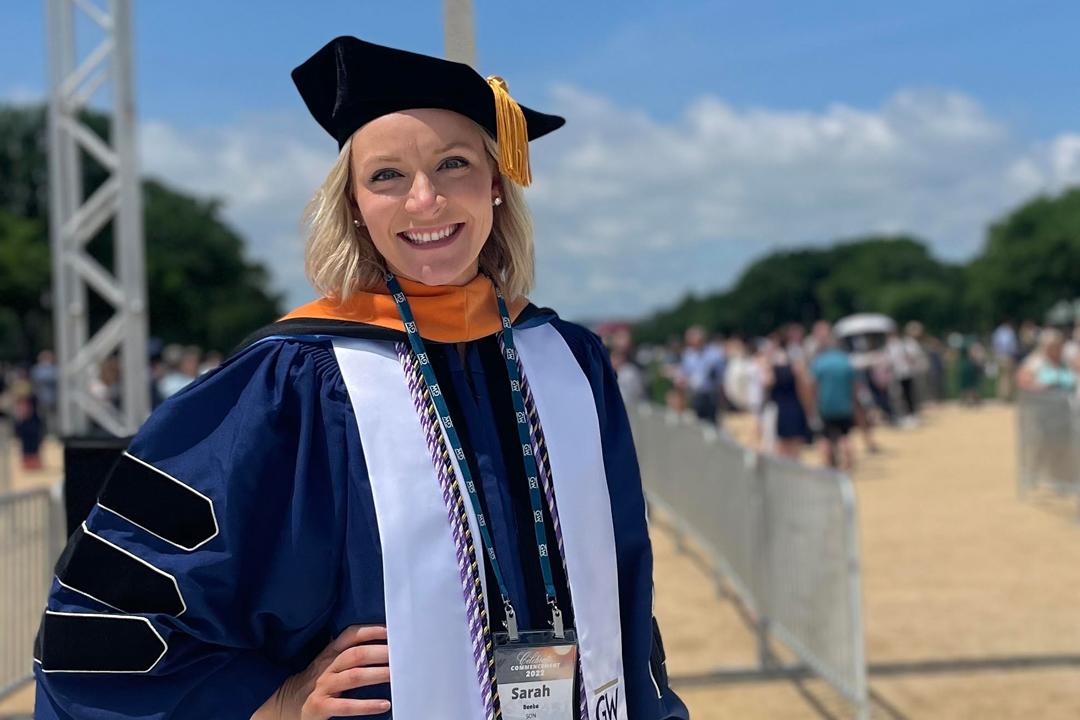A national survey of thousands of family nurse practitioner (FNP) students around the country found that many lacked experiences in performing numerous clinical tasks, leading Angela McNelis, professor and associate dean for scholarship, innovation and clinical science, to investigate whether those gaps could be addressed using virtual screen-based simulation.
She is the principal investigator of a study, Using Screen-Based Virtual Simulation in Family Nurse Practitioner Education, funded by the National Council of State Boards of Nursing.
“What we were most interested in was whether there was a difference between students who participated in this educational intervention’s experimental [virtual simulation] arm and students who matriculated through the program normally,” said McNelis.
FNPs are expected to be able to assess, diagnose, treat and evaluate patients across the life span. They are required to undergo hundreds of hours of face-to-face clinical training with actual patients supervised by an experienced nurse practitioner who facilitates their learning in mastering clinical tasks deemed essential. In the larger national survey, 3,940 students in all 50 states often had little to no experience in performing certain tasks, particularly in the area of pediatrics and geriatrics.
So McNelis recruited FNP students for a virtual simulation program involving 25 “virtual patients,” 40 percent of whom were pediatric and 40 percent of whom were geriatric. There was also a separate control group.
Sarah Beebe, George Washington University’s first PhD graduate in the School of Nursing and McNelis’ research assistant on the larger study, had additional questions for the virtual simulation intervention that formed the basis of her dissertation – Reflecting on Diagnosis: Factors Associated with Diagnostic Reasoning in Family Nurse Practitioner Students.
“I met Angie way early in my interview process at GW and knew that I wanted to work with her, said Beebe, who began her career in midwifery and women’s health care. “We had a shared interest in nursing education, and she was kind enough to bring me along for the ride.”
“I love the science behind different interventions for education, so I love teaching with an evidence base,” said Beebe. “I don’t want to just teach and hope that it sticks, I want to know that there’s evidence behind it, so that learning is engaging and that it works and that we have safer providers based on the education they are getting.
In Beebe’s study, students were scored on a series of questions that looked at the efficiency of history taking, examining the “virtual patients,” ordering tests that led to a list of differential diagnoses and then to a diagnosis on which a treatment plan was based. Pre- and post- exams showed that students’ metacognitive awareness, knowledge, and diagnostic reasoning improved.
“What I found from my study is that everything improved, metacognitive awareness improved, diagnostic reasoning improved and so did knowledge,” said Beebe. “We were producing family nurse practitioner students that when we took away clinical and replaced it with virtual simulation all of those things still improved.”
The verdict is still out, however, on the use of “virtual simulation” to train nurse practitioners. Currently, state certification boards allow students who are becoming registered nurses (RNs) to substitute direct clinical patient hours with simulation. That is not the case at the family practitioner level. Only after FNPs complete the required clinical patient hours can any extra hours be replaced with “virtual simulation.”
A growing challenge is the increasing difficulty for nurse practitioner students to find clinical sites for preceptorships. They face competition not only from nurses, but medical students and other health professions as well. The issue isn’t just the availability of clinical spots but the quality of the clinical experience. Parents and pediatricians are sometimes not willing to allow students to “practice” on their patients. In rural and medically underserved areas around the country there are not enough physicians and nurse practitioners for students to do rotations with. The COVID pandemic further disrupted the clinical experience, said McNelis, since many couldn’t go to their clinical sites—or when they went to the sites, the experience ended up being all about COVID care, which meant they were not being exposed to clinical experiences across the life span.
“"As a result," McNelis said, “students may struggle, which is probably why we found in our study that students weren’t getting the depth and breadth of experiences they needed.”
Because they have not yet completed collecting data from the study, McNelis can’t say whether it is better to do simulation or stay in traditional clinical rotation. She hopes the study provides evidence that virtual simulation is a viable alternative to the clinical experience for FNP students.
“We’re hoping that it is as good or better,” she said.
McNelis already has plans for continuing to work with Beebe on a study that would look at whether simulation would be more effective if done earlier in the program, with specific populations or certain diseases.
“From a personal, professional standpoint, Sarah and I evolved beyond faculty and student, and mentor and mentee,” McNelis said. “Now I would say we are colleagues.”


